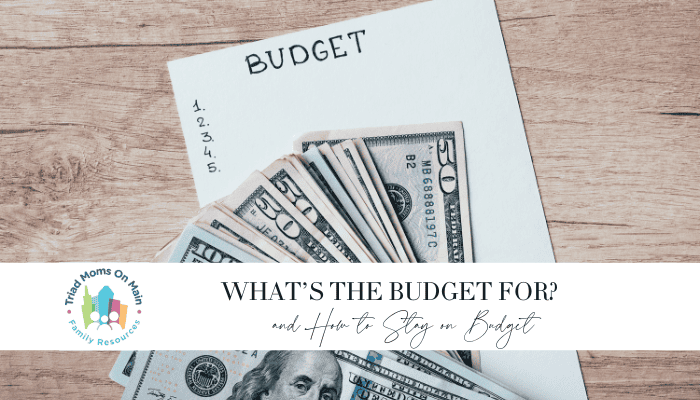What’s the Budget For?
By TMoM Team Member Dennette Bailey
Sometimes the very idea of budgeting can seem overwhelming, especially if we have not budgeted before. It might be a clever idea to start budgeting the same way we teach our children to budget. That is, we might start off simply saving for a gift we want to buy for ourselves or a special someone.
There are all types of budgets, including operating budget, financial budget, capital budget, housing budget, among others. However, a good first budget is the strategically planned one. Often, starting out with a strategic or specific goal in mind can be great practice for creating a household or business budget.
To create a strategic budget, we need to know what we want to purchase, how much it costs, and the time- frame for purchasing the item. Once we know this information, we can determine the total we need to save for the item.
For example, if we wanted to purchase new bedroom furniture or an economy car in time for the Christmas holiday, we would know that if we began saving in May and ended the savings by November, that timeline would provide approximately 7 months or 26 weeks to save. If this bedroom or car were, for example, $3000. We know we need to save $115.38 per week or 428.57 per month.
How to Fund My Budget
For some people, the issue then becomes, what if we do not have this much extra money leftover per month or week? How can we save funds for this item? Do not feel defeated. Part of the budget is planning the funding.
Can we save a specific amount of money per month by couponing, for example? Consider couponing tips in this great blog How to Coupon to Save Money.
Can we add a side hustle? Here is a great blog idea on side hustles The Art of the Virtual Side Hustle.
Is there anyone that might consider contributing to our purchase? Might a part-time job fund the expense? The important thing about this strategic budget is to make sure we have thought through how the item will be funded because then we can see the possibility that our budget is realistic, and we will be motivated to follow through with it.
What Does the Final Strategic Budget Look Like:
Item I want $
Cost of item $
Weeks or months to save for the item $
Funding method and estimated amount (1) $
Funding method and estimated amount (2) $
Total needed to save per week or month $
Following Through on What the Budget is for:
This leads us to our last consideration-following through with your budget. Sometimes, creating a sense of accountability aids in following through on a budget. When we share our purchase goal with someone, we might be more likely to follow through because we know this person will be looking to see the purchase by the time we have laid out. We could even create a fun incentive to following through, by for example, creating a budgeting club where members of the club share their strategic budget goals and meet up to share their success or not so successful purchases. The sentiment in a budgeting club should be one of encouragement and motivation, and even healthy competition, but not negativity or anxiety.
The “What’s the Budget For?” plan can help to motivate us to think bigger and expand the budgeting process to other aspects of our financial life. Eventually, we might merely compete with ourselves or learn how our budgeting could lead to millionaire status. Who knows, our strategic budget could lead to saving $100 per week starting at the age of twenty-five and having one million by age 65. If we start at 35, we could still have $500,000 by age 65!
Want to see more blogs like this and get notifications on local events and happenings? Subscribe to our free weekly newsletters here.

